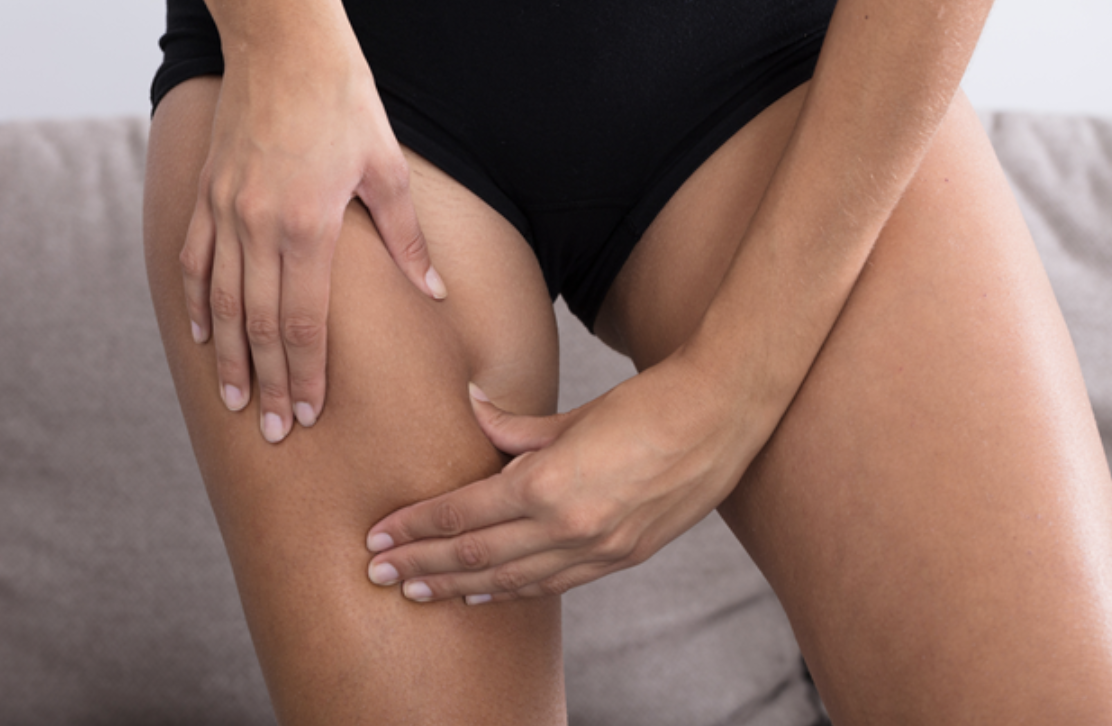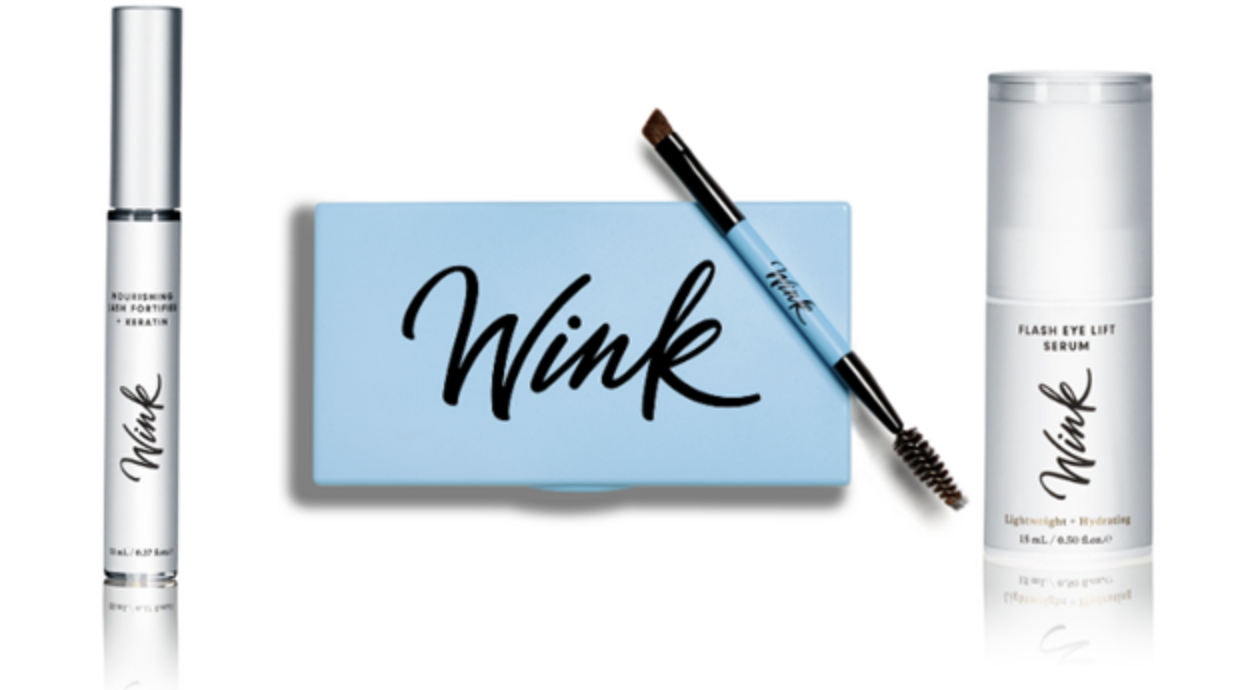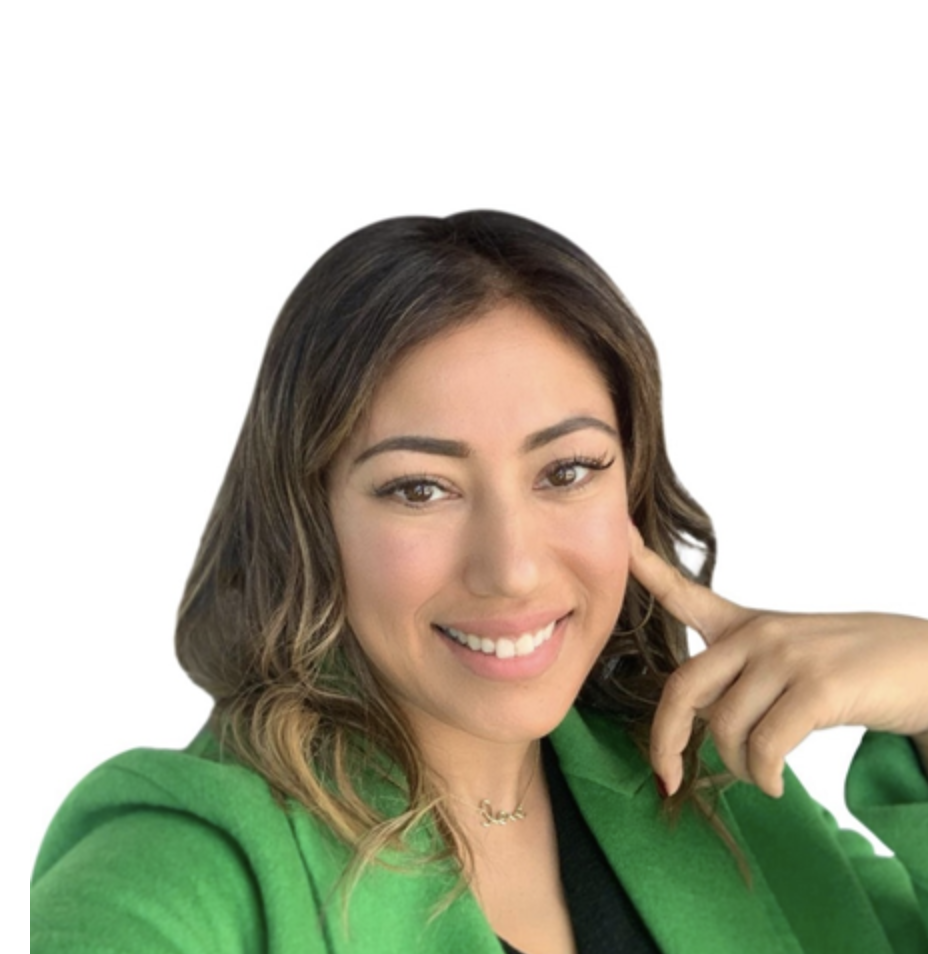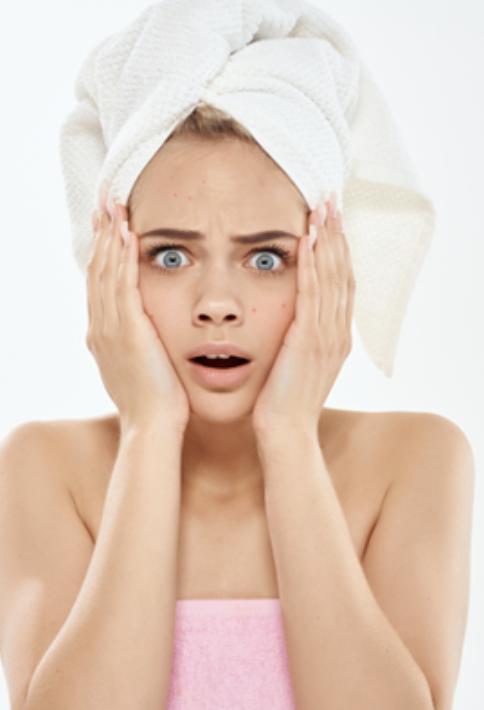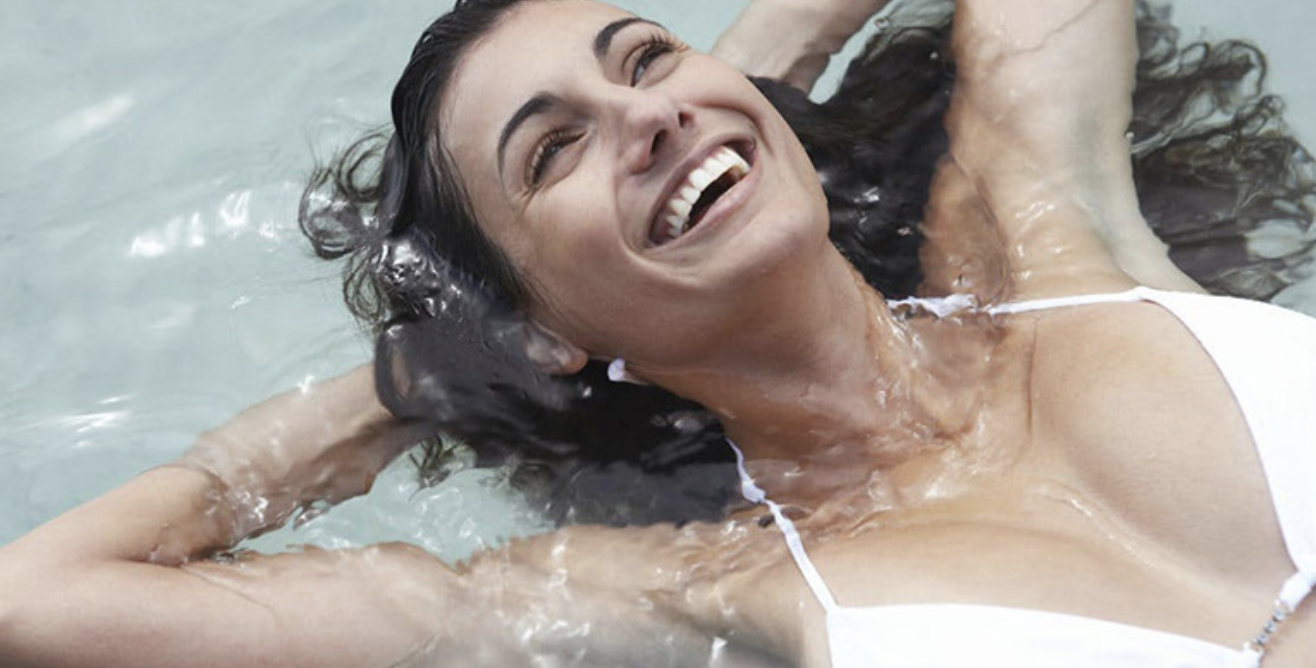“Cottage cheese,” “funky gravy.” “hail damage” – whatever you want to call it – cellulite is never something we want to see on our bodies. That lumpy, dimple-looking flesh on our thighs, buttocks, abdomen, and hips is dreaded by women and men alike. Cellulite is caused by fat cells pushing up against a layer of skin, tethered down by connective fibers that attach to the muscles. When there is a buildup of fat, these fibers pull down while the fat pushes up, creating the appearance of uneven, bumpy skin. Cellulite is not a weight issue and can affect individuals of all shapes, sizes and ages.
While cellulite is not a serious medical condition, it can make someone feel insecure or embarrassed. However, you aren’t alone; between 80 to 90 percent of women will experience cellulite at some point in their lives. Some might start to notice cellulite as early as puberty. Dr. Gretchen Frieling is a board -certified Boston Area Dermatopathologist. She cuts out the clutter to define what really works in 2019 to eradicate cellulite, be it a temporary or permanent solution.
Are there at home creams that can provide temporary improvement?
“If you’re looking for an at-home treatment, topical creams are an effective way to diminish cellulite. However, they’re a long-term or complete “cure,” says Dr. Frieling, She adds, “The fat cells are still under there! To maintain the results, you’ll have to apply the product every day. Use a moisturizing cream with ingredients that treat fatty tissues such as caffeine or retinol to minimize cellulite. To see results, you must apply the topical cream daily to improve cell circulation. Caffeine works as a diuretic, which can dehydrate the fat cells and change the water content, which can reduce the appearance of cellulite. While creams with at least 0.3 percent retinol work by thickening the outer layer of skin. It is essential to test these products on your skin before long-term use as some have shown to have adverse effects. Most creams can be found online and at any drugstore.”
What are the latest technologies to decrease Cellulite?
Acoustic wave therapy
Studies show that this can reduce the appearance of cellulite. Several treatment sessions are needed to see a reduction.
During one minimally invasive laser treatment called Cellulaze™, a tiny laser fiber is inserted beneath your skin. When the laser is fired, the laser energy breaks up the tough bands beneath the skin that cause us to see cellulite. This treatment can also thicken your skin, which is important. Skin often thins where cellulite forms. Thickening the skin can help reduce the appearance of cellulite.
Bottom line: Cellulaze™ may reduce the appearance of cellulite. Patients see results that last a year or longer. More research is needed to know for sure how effective this laser can be.
Subcision
Called Cellfina™, this medical procedure involves your dermatologist inserting a needle just under the skin to break up the tough bands beneath the skin that cause us to see cellulite.
Bottom Line: Cellfina™ has been shown to reduce the skin dimpling that you see with cellulite. In a study of 232 patients, 99% of them said they were satisfied with the results. The results can last two years and possibly longer.
Vacuum-assisted precise tissue release
This also breaks up the tough bands that cause us to see cellulite. During this procedure, your practitioner will use a device that contains small blades to cut the tough bands. After the bands are cut, the tissue moves upward to fill out and eliminate the dimpled skin.
Bottom line: This may be an effective treatment for reducing cellulite. A small study shows that many patients who received this treatment had less cellulite for up to 3 years. It’s too soon to tell, but the results may last even longer.
Radiofrequency
This is a type of treatment that heats the cellulite. One FDA-approved device combines radiofrequency with a laser, suction, and massage to target cellulite.
Bottom line: Recent studies suggest some patients see a little less cellulite. This result, however, is short-lived and several treatments are needed to see this minor change.
After treatment, bruises are common. These fade with time.
Are there lifestyle exercise or diet changes that will reduce cellulite?
AVOID SUGAR
Dr. Frieling explains, “Your diet may be playing a significant role in the amount of cellulite you have, so it’s important always to have a well-balanced diet. One of the biggest culprits for causing cellulite are sugary sweet snacks and processed foods. Sugar is stored in our fat cells, and having too much will cause them to expand, thus creating the appearance of cellulite. The same goes for foods with high sodium intake, which cause bloating and water retention, making cellulite more noticeable. Other foods to avoid are cheese, soda, deli meat, fried food, and white bread.”
EXERCISE REGULARLY
If you’re struggling to get rid of those stubborn dimples, it’s time to get up and get moving. “While it isn’t exactly the cure for cellulite,” says Dr. Frieling, she adds that “regular exercise will help in its prevention by strengthening the muscles underneath the fat in your butt, thighs, and hips. Squats and lunges, as well as a 45-minute walk, are great exercises that target the leg muscles and make the skin look more even.”
STOP SMOKING
Smoking reduces the amount of blood that flows to your skin, causing the skin to become thinner and saggier. While it is a difficult habit to kick, the cellulite on your legs, arms, and butt will be less visible.
REDUCE YOUR ALCOHOL CONSUMPTION
“Elimination or significantly reducing the amount of alcohol you consume may aid in decreasing the toxins that accumulate underneath our fat cells. Alcohol also has high amounts of sugar, which will only make the cellulite more noticeable,” says Dr. Frieling.
STAY HYDRATED
This probably won’t be the first time you’ve been told to drink more water, but it does help! Dr. Frieling explains that “By drinking 8 to 10 glasses of water every day, you’re helping to remove the toxins stored underneath the layer of fat which cause our skin to look lumpy. Staying hydrated also helps with the overall health of your skin, making it appear more plump and full”.
FAKE IT!
If you have fair skin, a self-tanner may help. Dimpled areas are less noticeable on darker skin. Start with a gentle body scrub, then apply a self-tanning lotion to cellulite areas only. Next spritz your entire body with a tanning spray. Pass on a real tan. It’ll damage your skin and make cellulite look worse.
About Dr. Gretchen Frieling
After graduating summa cum laude from Florida State University with a Bachelor of Science in Biological Sciences, Dr. Frieling completed her medical school at The University of Florida College of Medicine. She continued to excel academically and personally and pioneered a medical mission trip to the Dominican Republic to provide free medical care. After medical school, Dr. Frieling completed her training in Anatomic and Clinical Pathology at the Beth Israel Deaconess Hospital/Harvard Medical School. She then completed her Dermatopathology fellowship at the University of Vermont Medical Center. Currently, she is also a practicing Dermatopathologist in Newton, Massachusetts.
During her training, Dr. Frieling built an extensive resume, including but not limited to many articles in the Dermatology and Pathology literature, textbook chapters, and national conference presentations. She was on faculty at Harvard Medical School and participated in the first year Histopathology course.
In her spare time, Dr. Frieling continues to give back to her community and beyond. Currently, she is spearheading another medical mission to the Dominican Republic and partnering with Pedro Martinez and The Pedro Martinez Foundation.
Along with splitting her time as a practicing dermatopathologist, Dr. Frieling enjoys spending time with her husband, her two kids, and extended family, as well as volunteering in the community. She is a resident of Wellesley and loves good music and is always up for trying a new restaurant!

